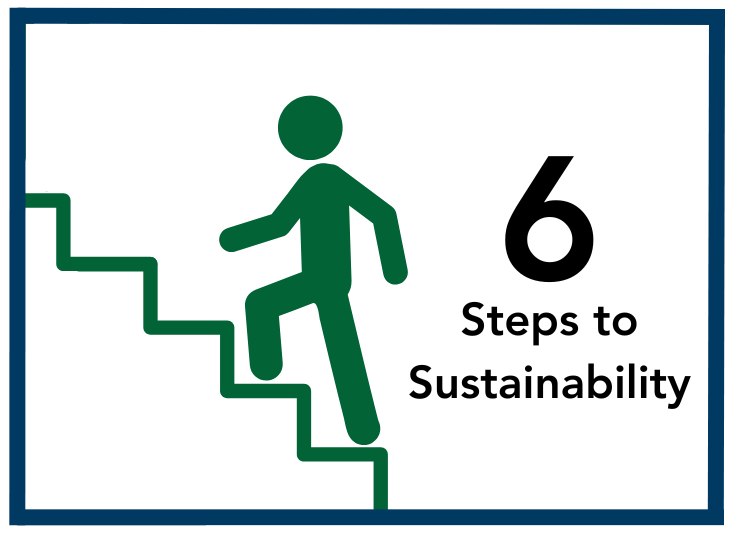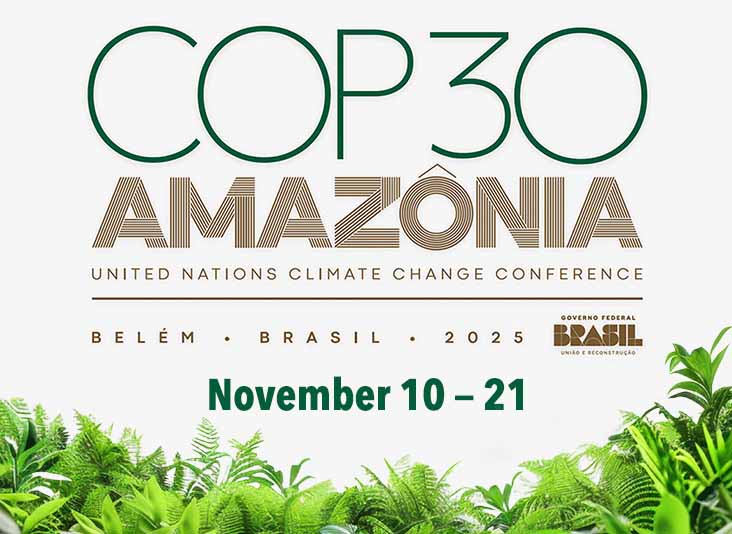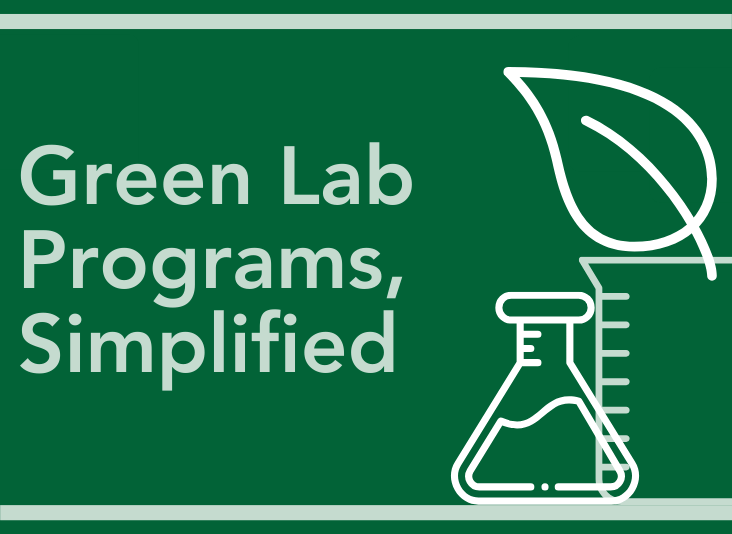6 Steps to Sustainability
Earth Month is a natural time to consider organizational environmental impact, including waste. For organizations of all types, the creation of waste as a byproduct of normal operations is a given. The only variable is the type of waste: solvents, single-use plastics, e-waste, lab waste, and more.
Unfortunately, environmental, health, and safety (EHS) and operations managers across the board are fighting a losing battle against the ever-growing amount of waste their organizations create. The commonplace difficult to recycle, heavily regulated, and complex wastes mean that much ends up in the landfill—frustrating their attempts to reach sustainability goals.
There is a better way, however—in the right system, even the most challenging wastes can be recycled and repurposed. Triumvirate Environmental, in conjunction with our subsidiary BestPLUS, offers one such system. As such, in honor of Earth Month, we examine the process used to maximize our clients’ sustainability and enable them to reach their goals with innovative recycling methods—including for wastes that are otherwise extremely challenging to dispose of in an eco-friendly way.
Sustainability Doesn't Need To Be Complex
A robust sustainable recycling program can be relatively simple to implement with the right system in place. In fact, with our solution, there are just six steps to optimize waste recycling and sustainability programs:
Step 1: Initial Recyclability Screening
The first step is to receive and unload a client’s waste at our recycling plant in Jeannette, Pennsylvania. This waste load may include:
- Regulated lab and industrial wastes
- General plastic wastes
- Miscellaneous wastes of other materials
The BestPLUS team only has 72 hours from unload to process the waste, as per regulations from the Pennsylvania Department of Environmental Protection (PADEP). When a container is approved, it is processed according to the date of receipt. Waste disinfection occurs immediately after initial determination and retrieval, using a thorough and well-tested process.
Post disinfection, waste material is shredded and sent for further processing. The now-empty transport container is disinfected and either properly disposed of or returned to the customer for reuse if they are taking part in our reusable waste containers program.
Step 2: Recyclable Waste Prepared for Processing
Non-regulated waste is staged and organized by polymer. Based on the disinfected regulated waste content and the end product that is being produced, the BestPLUS team decides which particular polymer mix is needed for which particular processing batch.
Step 3: Physical Waste Separation
Next, incompatible compounds like metal or glass are removed from the waste mix. Typically, this is done via a float-sink tank that sorts compounds based on their bulk density. Usually, unwanted materials are those that also happen to be denser—these will sink to the bottom of the tank while “good” compounds will float to the top.
Once these incompatible materials are removed, the BestPLUS team shreds the perfect mix of regulated and other waste types. This premixes the material and reduces overall particle size, resulting in a more homogenous mixture. A dryer belt removes any remaining moisture and collects any metal, glass, or other unwanted constituents that may have made it past the float-sink tank.
Step 4: Plasticization and Compounding
After that, the materials are compounded, plasticized, and blended. This now-homogenized mixture is melted to form patties, which are then fed through a cooling bath. This lowers the plastic’s temperature before the patties are grinded into small pellets. The team heats the pellets until they are dry and then they are blended with colorant and filler to achieve the perfect mix for the specific end product.
Step 5: Molding
This new mix is poured into an extruder that molds the material into the shape of the plastic lumber board being produced. After temperature reduction in a cooling bath, the BestPLUS team stacks boards for further processing.
Step 6: Finishing Touches
The success of a recycling program relies on finding an appropriate home and use for the products it produces. As such, the last step of our recycling process is very exacting: The BestPLUS team cools and carefully cuts each board to very specific dimensions based on their specific end uses and a product quality check is performed.
Once banded and staged, the lumber goes through another, extensive quality control check to ensure it meets all specifications. Once approved, it is loaded and sent out to stores and clients across the country for use in place of normal wood.
As an added bonus, all saw cutoffs are recaptured and sent through the manufacturing process again. There is virtually no wasted material throughout this process!
Ready To Achieve Your Plastics Sustainability Goals?
This simple, streamlined, and efficient process allows you to achieve your sustainable waste disposal goals—by enabling recycling of complex, regulated lab wastes directly into a useful product. Together, we at Triumvirate Environmental and BestPLUS can work with you to determine the most eco-friendly fate for your wastes—and further enable sustainability success. Start a conversation with us today to learn more about green waste management and disposal.







